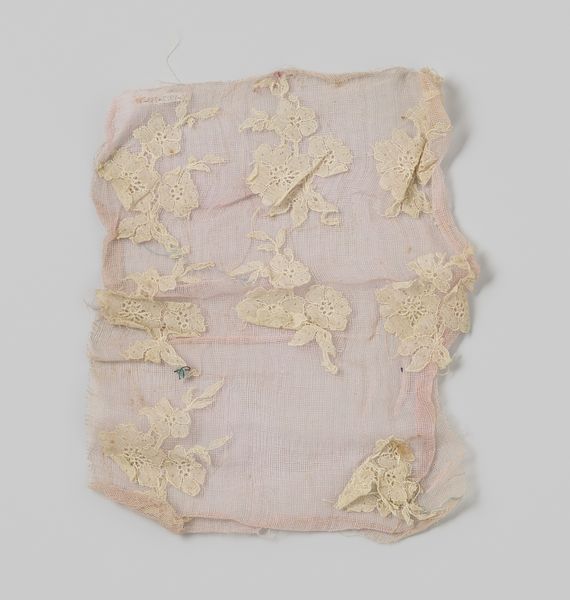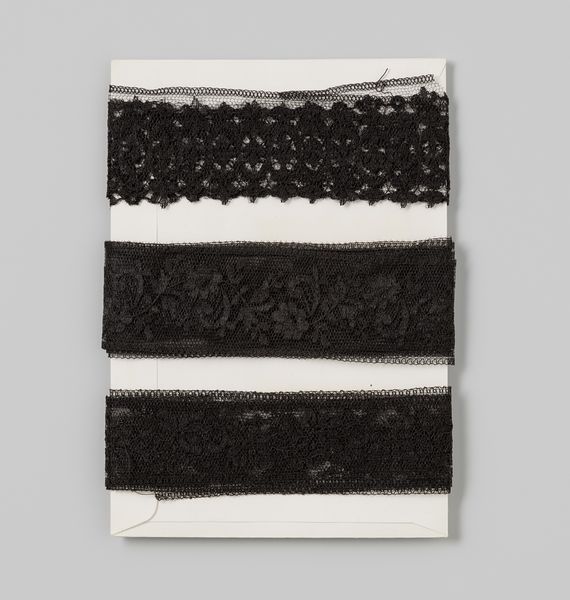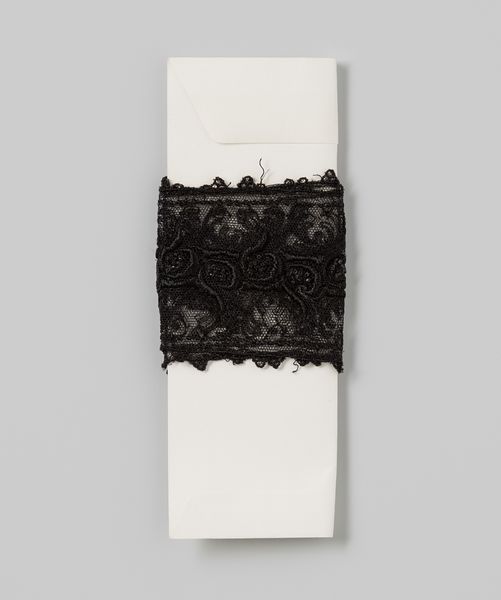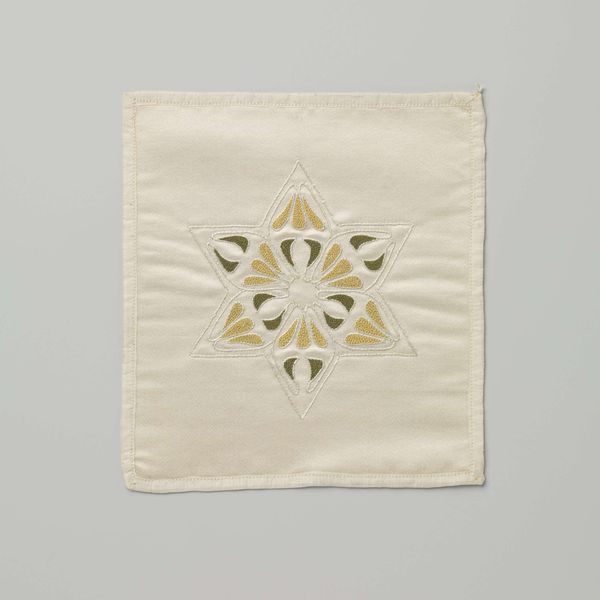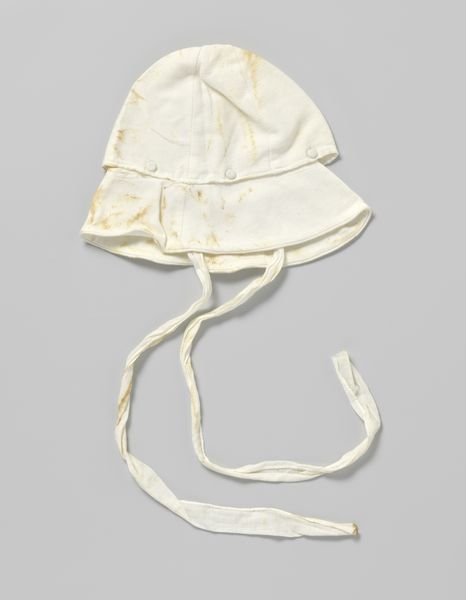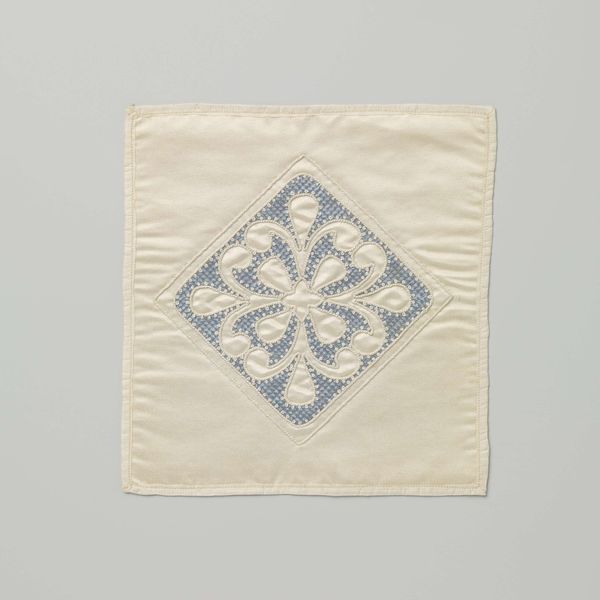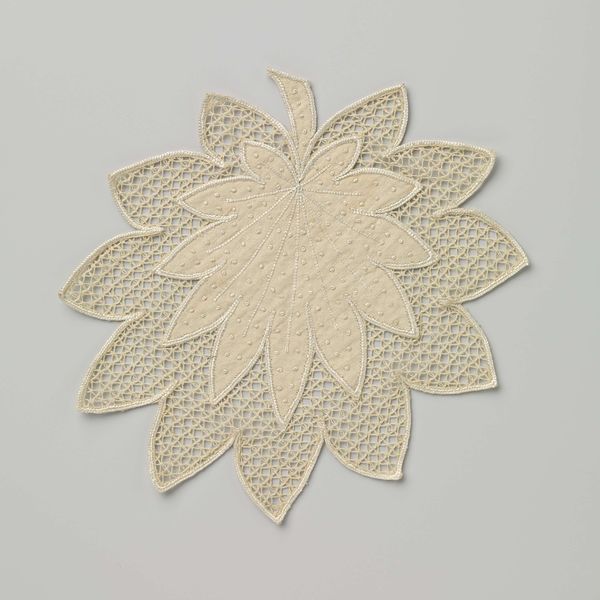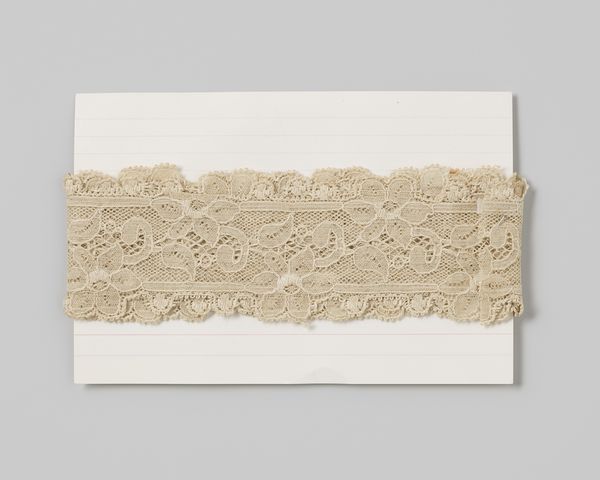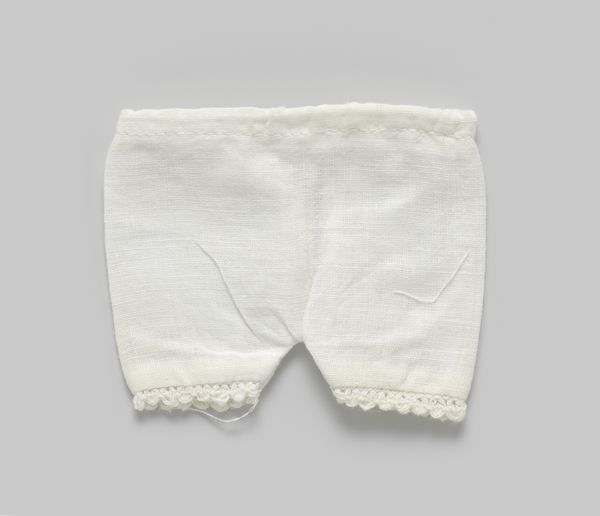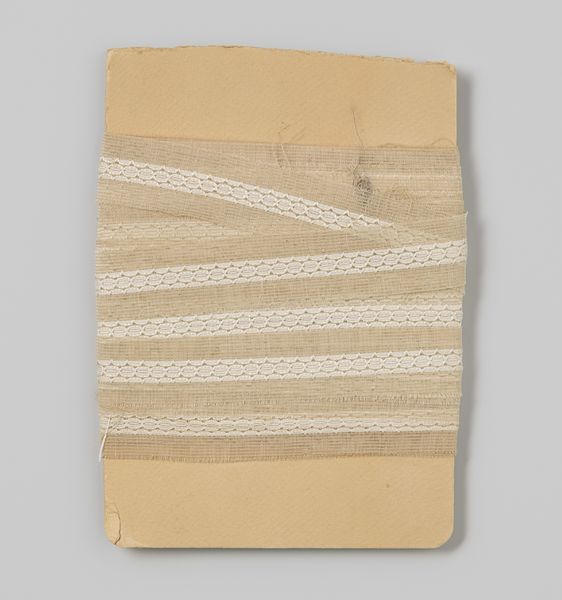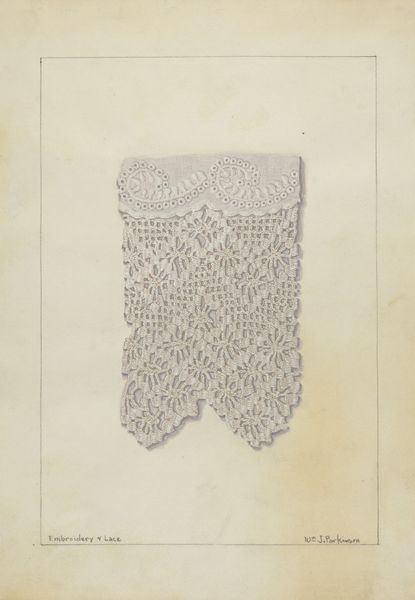
fibre-art, textile
#
natural stone pattern
#
rippled sketch texture
#
fibre-art
#
art-nouveau
#
textile
#
abstract pattern
#
repetitive shape and pattern
#
minimal pattern
#
organic pattern
#
repetition of pattern
#
pattern repetition
#
decorative-art
#
imprinted textile
#
layered pattern
Dimensions: height 10 cm, width 21 cm
Copyright: Rijks Museum: Open Domain
Curator: A first impression – it seems so delicate, almost ephemeral. The weave is incredibly intricate. Editor: Indeed. What we have here is a piece of white handwork with Jugendstil motifs, placing it around 1900. Its anonymous creator employed weaving and other fibre-art techniques. It epitomizes the Art Nouveau movement, often referred to as Jugendstil in German-speaking regions. Curator: The geometry is softened with organic curves and lines. Tell me, what draws your attention? Editor: It is certainly the stark geometry combined with these Art Nouveau curves. See how these floral-esque shapes are boxed by straight-edged diamonds. The repetition creates a hypnotic visual rhythm, further emphasizing a decorative function, of course. I wonder about its original context; was it part of a larger textile? A curtain? Dress trimming, perhaps? Curator: Most likely it was indeed part of some type of women's garment; needlework in this era became tied to ideals of femininity. While the Jugendstil motifs may have been considered progressive, they still operated within very tight constraints with regard to the role of women at the time. Editor: Yes, absolutely, the ornamental aspect should also be noted. The piece underscores a fascinating dialogue, or tension, between nature and artifice, structure and fluidity. These themes have played a crucial role in defining femininity in western societies. Curator: Precisely, and the delicate nature of the textile contributes to that understanding, almost symbolizing fragility and, simultaneously, beauty. The piece could thus reflect societal expectations and the perceived vulnerability of women during the late 19th and early 20th centuries. Editor: This small textile shows such thoughtful intention. Every loop and intersection speaks volumes about this unique moment in time. Curator: Absolutely, I look at this textile now through a different lens, appreciating not only the craftsmanship but also its intricate ties to identity and culture.
Comments
No comments
Be the first to comment and join the conversation on the ultimate creative platform.


